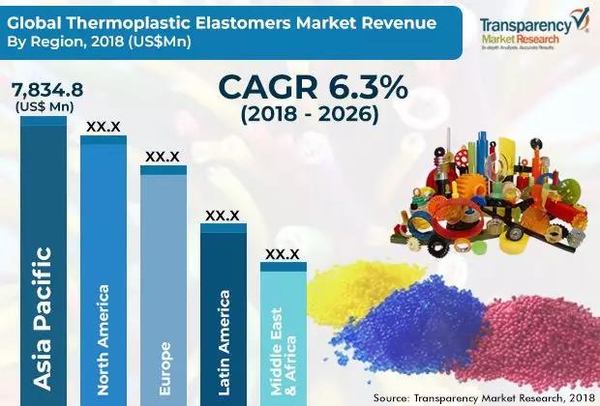Innovations in synthetic rubber are triggering growth for the industrial rubber products market. As such, styrene butadiene rubber is anticipated to dominate the global industrial rubber products market with the second-highest production amongst all rubber types, estimated to reach an output of ~7,500 kilo tons by the end of 2027. Hence, manufacturers are innovating new synthetic rubber solutions to improve tire technology. The growth of the SUVs and light trucks market has triggered the demand for multifunctionalized tires. Manufacturers in the industrial rubber products market space are increasing their efficacy in the production of multifunctionalized synthetic tires, since these offer excellent mechanical properties and increased fuel efficiency. Multifunctionalized tires are gaining widespread application in the automotive industry, since they overcome the challenges of physical stability and safety better as compared to conventionally-made tires. The easy-to-process attribute of multifunctionalized synthetic tires is boosting the manufacturing capabilities of companies in the industrial rubber products market space. The demand for industrial rubber products is largely dependent on innovations in auto components and motor vehicle output. Likewise, the automotive industry is estimated to account for the highest usage of industrial rubber products among all the end-use industries, predicted to consume ~30,700 kilo tons by 2027. The growing demand from the automotive industry and rise in application of rubber products in various end markets have triggered growth for the industrial rubber products market. Increased adoption of autonomous and battery vehicles is another driver for the growth of the industrial rubber products market. The demand for synthetic rubber types is projected to be on the rise due to the introduction of nano technology. This trend might hamper the demand for natural rubber. Despite technological innovations, natural rubber is predicted for high revenue growth, and dominates the industrial rubber products market in terms of high value and volume. Manufacturers are tapping into opportunities with the growing preference for nitrile latex in medical glove production. Companies in the industrial rubber products market are focusing on expanding their business in Asia Pacific. This is because Asia Pacific is projected to progress rapidly in terms of market volume share, from a record of ~40% in 2018 to ~47% by 2027. Moreover, China, India, and Indonesia are rapidly expanding in the industrial rubber products landscape, owing to the easy availability of raw materials and labor. Due to favorable government tax incentives and subsidies, low-cost destinations in Asia Pacific are attracting major rubber recyclers to set up their manufacturing base. Automobile giants are increasing the penetration of motor vehicles in rural areas of developing countries in Asia Pacific. Burgeoning increase in construction and infrastructure activities, owning to low labor and operating costs, are catalyzing market growth in Asia Pacific. Likewise, increasing exports of rubber products and rubber-canvas footwear from India are boosting overall revenue growth of the Asia Pacific region. Stringent government regulations in the industrial rubber products market have given rise to the widespread application of reclaim rubber. As stakeholders in various end markets are becoming increasingly aware about the repercussions of scrap rubber ending up in landfills, and also due to fluctuating oil prices, they are using reclaim rubber over synthetic rubber. Unique properties of reclaim rubber such as excellent versatility and durability are making it a popular choice amongst manufacturers in the industrial rubber products ecosystem. Reclaimed rubber is also associated with reduced processing costs and easy availability of raw materials, which makes it a cost-efficient option for manufacturers in the industrial rubber products market. Easy availability of waste tires and the advent of recyclable materials are triggering the demand for reclaim rubber. However, innovative elastomer-based products pose a threat to reclaim rubber. Although, elastomer is associated with very weak intermolecular forces and high failure strain as compared to rubber. Hence, manufacturers should increase the availability of industrial rubber products with high intermolecular forces and low failure strain for the construction and automotive sectors. Source:https://www.transparencymarketresearch.com/industrial-rubber-products.html
